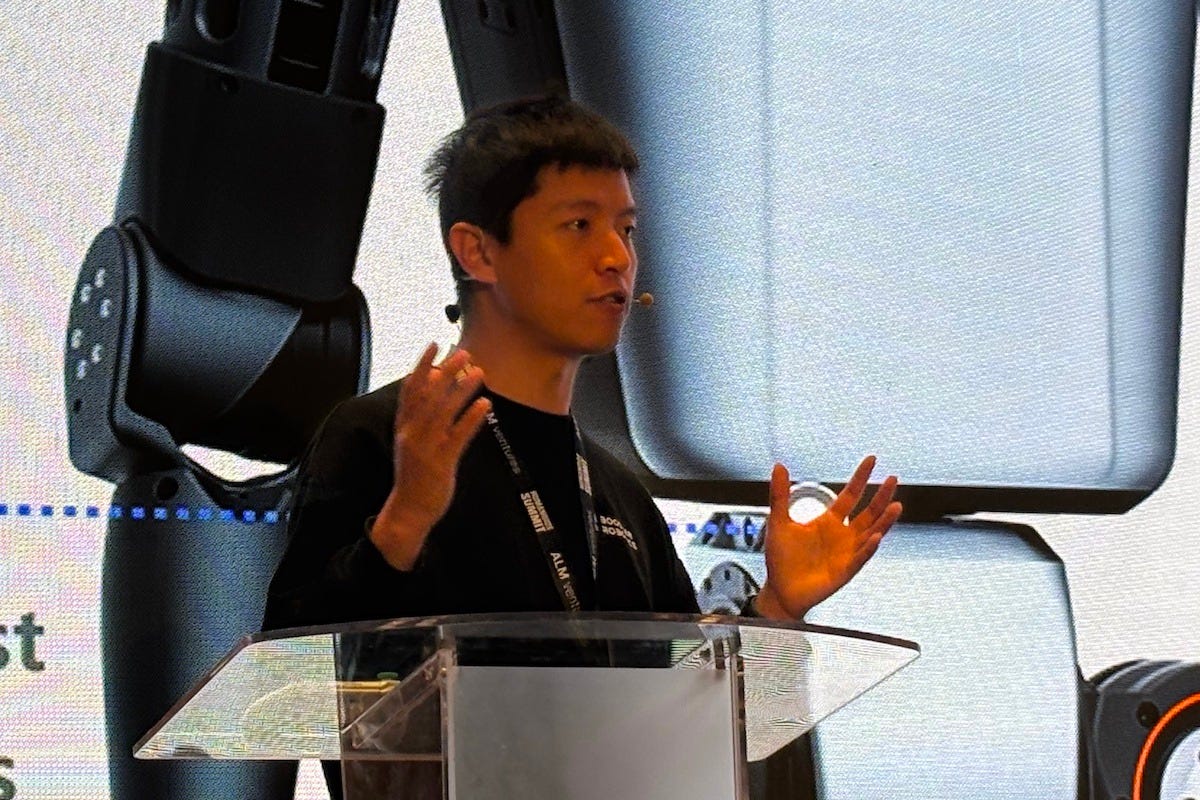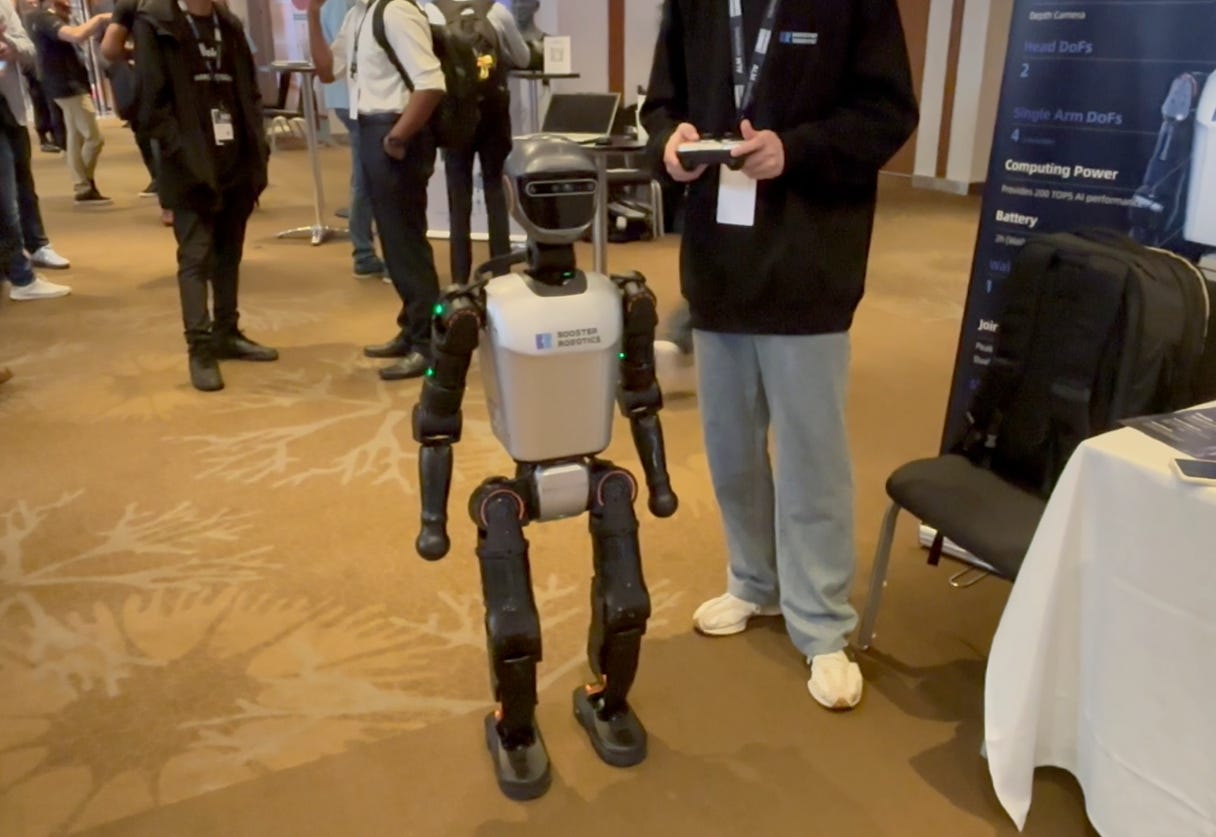Booster Robotics Bets on Robust, Affordable Humanoids for Mass Adoption
A strategy focused on durability, accessible pricing, and developer-friendly tools could bring humanoid robots into classrooms, labs, and everyday industry
Humanoid robots are still largely confined to labs, competitions, and demonstrations. Yet Booster Robotics argues the next big leap will come from enabling developers, much as PCs and smartphones were propelled forward by early adopters.
The company’s strategy emphasizes robust design and developer-friendly platforms. Instead of fragile prototypes, humanoids must be reliable enough to withstand falls, navigate stairs, and resist pushes. This emphasis on durability aims to build trust and broaden use cases beyond spectacle.
“We want to really make something robust that people don’t have to worry about,” said Chaoyi Li, Head of Globalization at Booster Robotics. “You can carry it around different places. Nothing bad happens. That’s what will encourage more people to experiment.”
Crucially, the roadmap envisions a layered ecosystem: hardware, operating systems, development tools, and APIs working together. By lowering the entry barrier for experimentation, the hope is to replicate the virtuous cycle that once brought millions of developers into web and mobile applications.
The early target markets are education, scientific research, and entertainment—domains where humanoids are already active. But the ultimate goal is much broader.
As Li put it, “If we look back at how PCs and smartphones evolved, early adopters were professional developers. We believe humanoids will follow the same path.”
Building a developer ecosystem
The remarks were delivered in London during the 2025 Humanoids Summit. Li underscored that humanoids will only succeed commercially if a thriving developer community can flourish around them.
He compared the evolution of robotics to earlier technology platforms. In the 1980s and 1990s, developers moved from desktop software to the web; in the 2000s, smartphones created another surge. Robotics, he argued, represents the next general-purpose platform.
“If we can provide the right foundation, developers will do the rest,” he said.
Booster’s approach is to provide both high-level APIs for tasks such as navigation or kicking a ball, and low-level APIs that allow direct motor control. Simulation environments also play a critical role, enabling developers to test locomotion before deploying it to physical robots.
“The best practice now is to train robots in simulation and then transfer those skills to real-world machines,” Li noted.
Li stressed that while humanoids often generate headlines for flashy demonstrations—such as kicking a football—practical value will come from manipulation capabilities.
“Hands that are flexible, strong, and human-like are essential if humanoids are to move beyond entertainment,” he said. Booster expects third parties to commercialize specialized manipulation solutions on top of its mobile platform.
He also pointed out that robotics developers are still relatively scarce compared to software developers. Globally, there are millions of software engineers, but only a fraction are working in robotics.
“We need to lower the barriers so that developers who today build apps can tomorrow build robotics applications,” Li said.
To close this gap, Booster is pushing for tools that simplify robotics development, including simulation-based training, cloud integration, and modular software kits.
Robustness before entertainment
At the summit, Li demonstrated how imitation learning and reinforcement learning allow humanoids to replicate human actions from video inputs. But he insisted robustness, not entertainment, is the first priority.
By repeatedly stress-testing robots through falls and pushes, Booster aims to identify weak points early.
“We let it fall so we know what’s the weakest part,” Li said. “That way, when our customers get the product, it doesn’t break as much.”
Mobility remains another core focus. The company has been developing humanoids that can resist external force, climb stairs, and recover balance—essential traits for industrial and service applications.
“Mobility is the advantage humanoids have over other machines. They need to be able to walk, resist pushes, and handle real environments,” Li explained.
Booster has also begun work on hand dexterity, aiming to expand humanoids’ ability to manipulate objects with precision. Li noted that other companies may take the lead in commercializing specialized grippers and manipulators, but Booster intends to make sure its platform can integrate them seamlessly. “Our role is to make the platform open enough that others can innovate on top of it,” he said.
Beyond locomotion and manipulation, Booster is experimenting with perception and interaction. Using advanced sensors and machine learning, its robots are beginning to recognize human gestures, interpret environments, and respond to changing scenarios.
“Interaction is what makes a humanoid more than a machine. It is what brings them closer to being real collaborators,” Li said.
Price, accessibility, and competition
Booster’s humanoid platform currently retails at $34,000, with a smaller version priced at $13,000. Li noted that costs could fall below $10,000 as production scales, opening access to startups and educational institutions. Delivery times are already under a year, reflecting the company’s expanding production capacity.
Affordability is a key driver of adoption. Li argued that once humanoids drop below the $10,000 threshold, they could become accessible to small businesses, schools, and even hobbyists. “Eventually, the price should even go lower, where I myself could afford it,” he said, highlighting Booster’s ambition to democratize access to humanoid robotics.
The firm faces competition from established Chinese robotics players such as Unitree. But Li emphasized differentiation.
Unitree is “a great company,” he said, but Booster sets itself apart through stress-tested durability and user-friendly software environments.
“We throw our robots around in testing so that our customers don’t have to worry. That’s how we know they can handle real-world scenarios,” he added.
Founded in 2023, Booster Robotics has already attracted tens of millions in funding from backers including CMBC International and Zhongguancun Science City. Its humanoids have been showcased at WRC2024, where they performed athletic feats like Kung Fu demonstrations and push-ups, gaining global attention.
The company’s founder, Cheng Hao, studied at Tsinghua University and previously led robotics projects that laid the groundwork for Booster’s current technology base.
Toward embodied intelligence
Looking ahead, Booster positions its humanoids as part of a larger mission: accelerating the development of embodied intelligence. The company sees itself not just as a hardware manufacturer but as a platform provider, akin to how operating systems enabled the rise of mobile applications.
Li argued that building practical collaboration tools will be just as crucial in robotics as in enterprise software.
“Back 20 years ago, we were using paperwork. Now we use Slack, Teams, and Zoom. For robotics, it will be the same. Having good tools and an ultimate goal will help build this ecosystem,” he said.
Booster’s strategy is to unite developers worldwide, pairing its robust humanoid hardware with open APIs and simulation tools. If the formula works, humanoids may soon shift from novelty demonstrations to indispensable collaborators across research, education, and industry.
The long-term vision is one of shared innovation.
“We want to see developers everywhere building robotics applications, sharing their work, and even making a living from it,” Li said.
By combining reliable hardware with flexible software, the company hopes to lower barriers to entry and accelerate the integration of humanoids into everyday life.
The challenges ahead are significant, ranging from safety standards to regulatory approval and ethical considerations.
But Li remained optimistic: “Every platform shift starts small. PCs started in garages, and smartphones started with simple apps. Humanoids will follow the same trajectory, and we want Booster to be at the heart of it.




